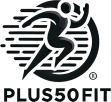Not too long after my third Half Marathon and not too long after the first pandemic lockdown in 2020, I set my sights on a new challenge: the BMO Vancouver Marathon. It felt like the logical next step—a natural progression from 21.1K to 42.2K. But what I thought was a bold step forward quickly turned into a painful lesson in what not to do when training for a marathon.
The Perfect Storm: Overtraining & Underpreparing
Fueled by excitement and ambition, I ramped up my mileage without fully respecting the fundamentals—cross-training, strength training, mobility, and recovery. In my mind, more miles meant more fitness. Simple, right? Well, my body had other plans.
I started feeling discomfort in my right ankle and along the inside of my shin. Like many runners, I assumed it was just a minor ache that would resolve itself with a bit of rest. Spoiler alert: it didn’t. The pain persisted, creeping into every run, making simple movements like pushing off the ground feel strained. Eventually, I was diagnosed with Posterior Tibial Tendonitis—an overuse injury that can sideline a runner for weeks, if not months.
The Hard Reset: From Frustration to Rehabilitation
At first, I resisted the idea of stepping back. I had a marathon to train for! But continuing to push through pain was like trying to run on a flat tire—it wasn’t going to end well. So, I did what I should have done earlier: I listened to my body.
My rehab plan included:
- Rest & Reduced Load – Backing off running completely for a period and switching to lower-impact activities like cycling and pool running.
- Strength & Mobility Work – Focusing on foot, ankle, and lower-leg stability exercises to strengthen the posterior tibialis and surrounding muscles.
- Cross-Training & Smarter Training Load – When I returned to running, I gradually increased volume with better attention to quality rather than just quantity.
The Road Back & Lessons Learned
It took patience, but eventually, I made my way back to running—wiser and more resilient than before. I learned firsthand that running more doesn’t always mean running better. Strength training, mobility work, and smart recovery aren’t optional—they’re essential.
Fast forward to today, and I’m now training for my first full marathon in October 2025, this time with a much smarter approach. I’m not just running; I’m building a stronger, more durable body that can handle the demands of marathon training. The lessons from 2020 and the still serve as a constant reminder:
➡️ Train smarter, not just harder.
➡️ Respect the importance of strength & mobility work.
➡️ Listen to your body—pain is a signal, not a challenge.
While I never made it to the starting line of the BMO Vancouver Marathon, that setback ultimately set me up for success today. I may have lost that battle, but I’m in a much better position to win the war—on my terms, on my timeline, and with a body that’s built to last.
Have you battled an injury that changed the way you train? Drop a comment and share your experience! Let’s learn from each other.
